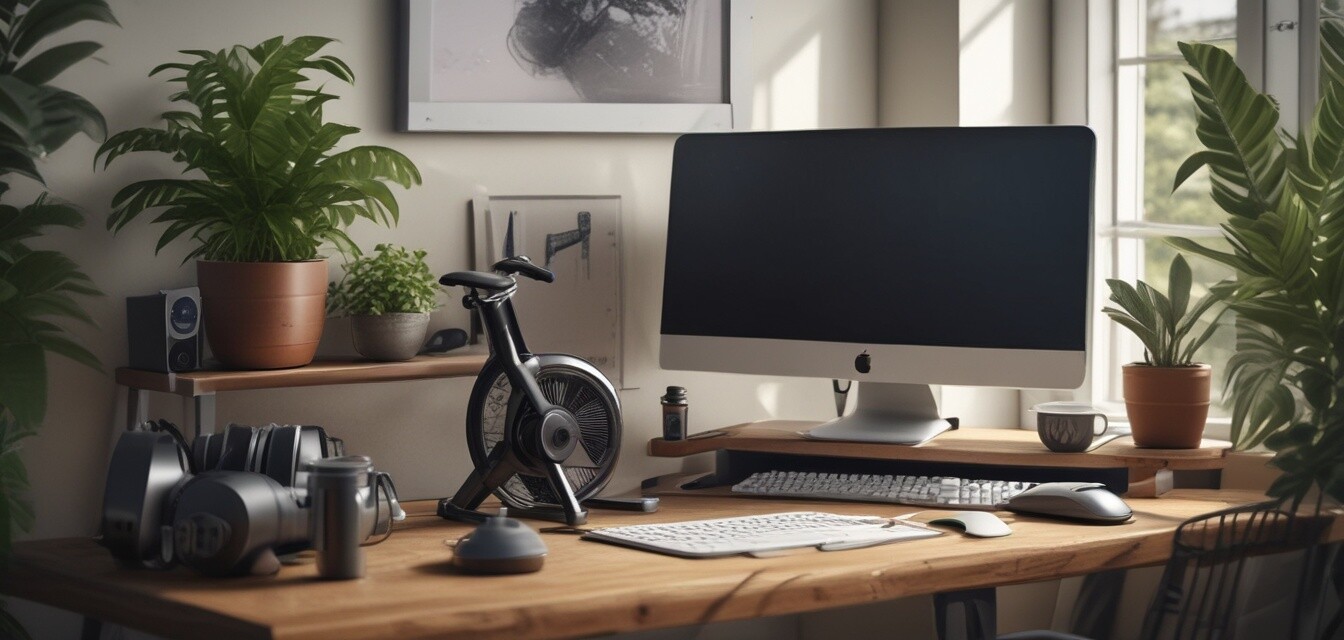
How to Successfully Blend Work and Exercise at Home
- Incorporating exercise into your home office routine can enhance productivity.
- Simple routines and accessible equipment can make a significant difference.
- Set clear boundaries between work and exercise to avoid distractions.
As remote work becomes more common, many individuals are finding themselves faced with the challenge of balancing productivity and physical activity within their home office setups. The good news is that it’s entirely possible to integrate exercise into your daily routine while maintaining focus on work tasks. This guide provides practical tips to seamlessly blend your professional responsibilities with health-promoting activities, ensuring that your work from home journey is both effective and rewarding.
Why is it important to exercise while working from home?
Maintaining an active lifestyle has several benefits, especially for those working from home. Regular movement can mitigate the adverse effects of prolonged sitting, reduce stress, and enhance mental clarity. Below are some reasons why exercise should be a part of your work routine:
- Improved concentration: Physical activity boosts blood flow and oxygen to the brain, enhancing cognitive function.
- Stress relief: Exercise serves as a natural stress buster, helping to clear the mind after intense work sessions.
- Health benefits: Regular movement promotes cardiovascular health and can help combat the sedentary lifestyle often associated with remote work.
Effective strategies for blending work and exercise
Integrating exercise into your home office routine doesn't have to be a daunting task. Here are some effective strategies you can implement:
1. Set a schedule
Blocking out time in your calendar for exercise is one way to ensure it gets done. Consider scheduling short breaks throughout your workday specifically for physical activity.
Here’s a sample schedule:
| Time | Activity |
|---|---|
| 9:00 AM | Check emails and plan the day |
| 10:00 AM | 10-minute stretch break |
| 12:00 PM | 30-minute workout session |
| 3:00 PM | Quick walk around the block |
| 5:00 PM | Wind down with low-impact exercises |
2. Use functional office equipment
Investing in ergonomic and fitness-friendly office equipment can help bridge the gap between fitness and work. Here are several items to consider:
- Standing desks: Allows you to alternate between sitting and standing throughout the day.
- Desk cycles: Compact exercise bikes that can be used while working.
- Balance boards: These can help engage your core while standing at your desk.
3. Incorporate micro-workouts
Micro-workouts involve short bursts of physical activity throughout the day. This strategy can be particularly effective in a home office setting. Try incorporating the following exercises at your desk:
- Desk push-ups - 10 reps
- Chair squats - 10 reps
- Seated leg lifts - 10 reps per leg
- Calf raises - 15 reps
4. Take walking meetings
Whenever possible, opt for walking meetings. Whether it's a phone call or a video conference, walking while you discuss projects can keep you active and engaged.
5. Use technology to your advantage
Fitness apps and wearables can help you keep track of your movements and encourage you to stay active. Consider using apps that offer:
- Workout reminders
- Step counters
- Goal tracking
Turning your home office into a fitness-friendly zone
Creating an environment that supports both work and exercise is key. Here are some tips on how to optimize your workspace:
- Designate a workout space: Dedicate a corner of your home office where you can easily perform stretches and exercises.
- Keep fitness equipment accessible: Store weights, resistance bands, or an exercise ball within arm's reach for convenience.
- Declutter: A clean and organized workspace can foster a more productive environment.
Maintaining balance and productivity
It's essential to set clear boundaries between work and exercise. Here are some tips for maintaining that balance:
- Use time management techniques, such as the Pomodoro Technique, to ensure focus during work intervals.
- Communicate your schedule with colleagues to minimize interruptions during workout times.
- Stay committed to the plan; consistency is crucial for success.
The benefit of community support
Staying engaged with a community can motivate you to stay consistent with your exercise routine. Consider joining online groups or local fitness classes where you can share your goals and achievements.
Pros
- Improved productivity and focus during work hours.
- Better overall health and reduced stress levels.
- Greater flexibility in managing personal and professional tasks.
Cons
- Requires discipline to maintain a consistent routine.
- Potential distractions while trying to focus on work.
- Initial setup costs for ergonomic or fitness equipment.
Conclusion
Successfully blending work and exercise in your home office can lead to higher productivity and improved physical health. By setting up a structured schedule, utilizing functional equipment, and integrating regular movement into your routine, you can create a harmonious balance that benefits both your job performance and personal wellness. For more tips on optimizing your home office, be sure to check out our section on ergonomic accessories and latest trends.